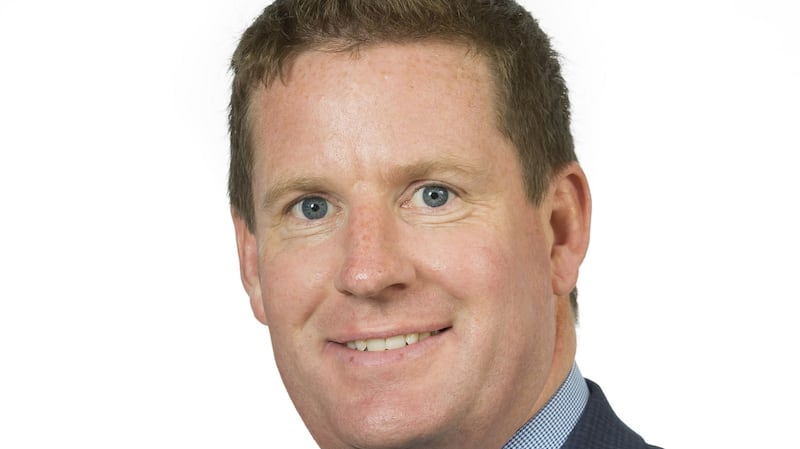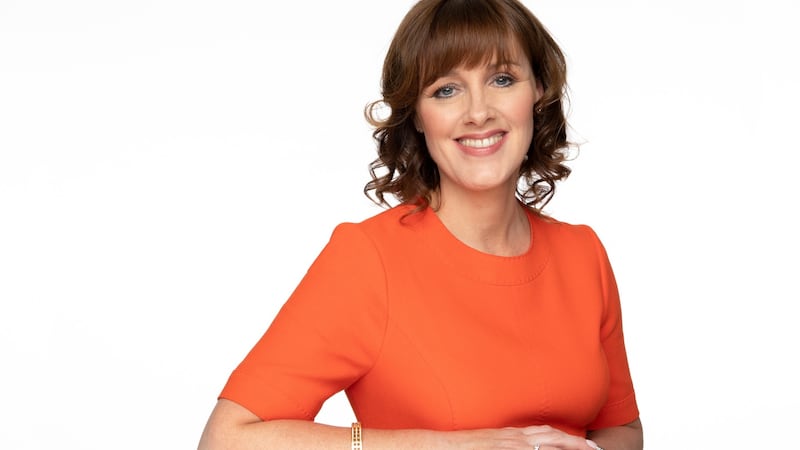After a subdued start due to the pandemic, the housing market took off with a bang in 2021, leading to double-digit price growth. A mix of soaring demand, restricted supply, historically low interest rates – and an increased focus on lifestyle, thanks to the move to remote working – turned up the temperature on property prices right across the country.
Nationally, prices rose by 12.4 per cent in the year to September 2021, with prices up 11.5 per cent in Dublin, according to the Central Statistics Office.
However, a moderation in demand combined with an increase in supply means house price growth should start to slow over the coming year.

David Cantwell, director, Hooke & MacDonald
2021 was an extremely active year for residential sales. Sales of new three- and four-bedroom houses in Co Kildare, Co Meath and Co Wicklow were particularly buoyant, with demand significantly exceeding supply in all areas.
The biggest challenges for developers in responding to the demand for new homes are the rising cost of labour, materials and utilities, as well as delays in achieving planning permission. This is caused by an inefficient planning system, a surge in objectors and judicial reviews causing chaos for supply. The irony is that some of the objectors are politicians who should be facilitating the supply of new homes rather than impeding it.
While most people do not seem to want new housing beside them, the reality is that new building and increased supply is the only long-term solution to our housing crisis so it’s the responsibility of everyone to take a more welcoming approach.
Apartments were in good demand but the non-viability of delivery of new apartments has starved the market of apartments for sale, except in a small number of high-end apartments in Dublin 4 and south Co Dublin. The fact that more than 50 per cent of the delivery cost of each new apartment goes on non-construction items such as VAT, planning costs and levies, water and other utility costs is preventing the supply of homes that are needed to achieve urban densification.
The second-hand residential market had a busy year with the middle and upper ends being particularly strong, with multiple competitive bidding on most properties and guide prices being generally exceeded. Prices are likely to moderate somewhat in 2022, with housing completions likely to reach 27,000. Energy rating will become more important to purchasers in determining what price they should pay.

Guy Craigie, director of residential, Knight Frank
In 2021, our residential team has witnessed a real lack of mobility among movers – those looking to downsize or trade up who, like most, are unable to buy a new home without selling their own and the tricky balancing act it entails.
Movers are entering a fiercely competitive market made up of chain-free, fully funded buyers to include returning emigrants, first-time buyers and a re-emergence of investors who are not under the same constraints as those needing to sell. It has created a bottleneck with higher-than-normal fall-through rates, as would-be movers decide to postpone their home sales until stock levels ease. By doing so, however, they are inadvertently perpetuating the supply issue.
Our new homes team has also experienced significant undersupply, with overwhelming demand since the beginning of 2021, as developers try to accelerate timelines for the delivery of homes delayed by lockdowns and the knock-on effects of labour shortages, escalating construction costs and now supply-chain issues.
First-time buyer demand is extraordinarily high, particularly in popular towns and commuter areas, where we are seeing increases in excess of 15 per cent in some instances as more people are returning to their place of work and many are prepared to be flexible on location. At the mid to upper end of the market in Dublin, we are seeing strong demand from downsizers, particularly for the increased number of boutique apartment developments in prime residential locations. There is also demand from those looking to trade into a new A-rated home instead of refurbishing an older property.
We expect 2022 will see some increase in supply to the market, but with volumes still substantially below demand, and large numbers of people who have been unable to secure a purchase this year competing with next year’s new buyers. All of this combined will likely continue to drive prices higher over the course of next year.

TJ Cronin, president of the Society of Chartered Surveyors Ireland (SCSI)
2021 or “groundhog year” as one prospective buyer not so fondly named it, has been an exacting one for everyone involved in the property market.
Unsurprisingly, the lack of supply of new and second-hand properties remains the dominant issue and this will continue to be the main market driver going forward. During the year, it wasn’t uncommon when placing a property on the market to receive offers higher than the asking price as an opening bid.
Given the demand/supply imbalance in both the sales and rental markets, I expect sale prices to rise next year by 5- 6 per cent, while rents will probably increase by up to 5 per cent, depending on location.
This year we saw a very clear twin-track market emerge in the residential market, with a very strong demand for new homes, particularly first-time buyers. The standards and efficiency of new homes, their sustainability, coupled with the support of the Help to Buy scheme and more attractive mortgage rates for “green homes”, have certainly encouraged many buyers to go the new home route.
Second-hand houses in need of considerable renovations appear to be suffering somewhat, by comparison, and are proving less appealing to some buyers. The increased costs of building materials and the shortage of builders and skilled trades, is clearly having an effect here.
The recent establishment of the Commission on Housing was a welcome development, as were the ambitious targets set out in the Government’s Housing for All plan. Achieving those targets and delivering the range and scale of high-quality, affordable and sustainable housing that our citizens require is the next big step. That’s our wish for 2022 – and no more groundhog of course.

Pat Davitt, chief executive, IPAV
The property price market has shown resilience but that should hardly be surprising given demand, pent-up since the financial crash of 2007 to 2013, and the paltry level of home building since then. Supply averaged a mere 10,000 a year over nine years and grew to nearly 21,000 last year and a likely similar number this year. This is against an estimated need of about 35,000 every year for several years.
Given the scarcity of supply, we’re likely to continue to see increases for the foreseeable future. My prediction for 2022 is that, subject to no interest rate rise and only minimal policy changes, we’re likely to see price inflation of the order of 5-10 per cent.
There are not enough properties available for purchase right now. This scarcity is also having the effect of would-be sellers not putting their properties on the market, lest they get caught on the buying side in a rising market.
If there was an interest rate hike of 1-2 per cent, many potential purchasers could be priced out. Should the number of purchasers decline, we may find that we’re building enough homes.
The introduction of the Shared Equity Home Ownership Scheme will help the lower-paid, as unfortunately the Central Bank did not adjust the mortgage measures to enable them secure mortgages in their own right. They will now be faced with owning – maybe in the short term – less than 100 per cent of their new home. This will drive prices higher at the lower end on the market.
We need to see the cost of building homes reduced to make them more affordable. There should be a reduction in the VAT rate on new housing from 13.5 per cent to 5 per cent for owner-occupiers.
Accompanying measures would need to be introduced to ensure the savings are passed on to the owner-occupier and not used to enhance developer margins.
A realistic strategy is needed to bring about 100,000 vacant properties and business premises into the housing stock, including tax incentives. If 10 per cent, or 10,000 of these properties, came back into the housing stock it would deliver the same result as building 50 per cent more new houses.

Stephen Day, director, Lisney
The year 2021 will be remembered as the buyers’ year of frustration. This year’s buyers found themselves in the perfect storm. There was a 10-year high in mortgage approvals, residual buyers from the 2020 market to compete with, and negative interest rates bringing investors to the market to better park their deposits. This swell of buying power was met with low stock levels. While we saw increased stock from 2020 it was less than the market required.
It may have been a sellers’ market, but sellers themselves were concerned with becoming buyers. There was a lack of bridging finance and real concerns over losing value by selling an asset and renting while waiting to buy in a fast-growing market. The combined effect saw mid-market properties in particular benefit from huge growth as frustrated buyers fatigue-purchased.
Coastal properties along the Dart line, with Monkstown a standout, retain their popularity status. The outdoor lifestyle has grown in importance in choosing a home – more so than the traditional distance from St Stephen’s Green. Selling off-market remains exceptionally popular, particularly north of the €2 million mark and we continue to see cash buyers returning home from abroad looking to secure one of these properties.
The apartment market has not seen the recent growth of the housing market, but still trades well. There was a period at the end of last year when more properties were available to rent than buy – but 2021 has seen this exceptional position corrected.
The proposed Bill before the Oireachtas requiring sellers to have prepared a legal pack prior to marketing is welcome, and will bring transparency to the process. It will also encourage confidence in trading particularly when trading in a chain.
Public sentiment is mixed. Many hope to see prices reduce as they uncomfortably watch in the wings as growth continues. As purchasing power continues to rise and sellers remain somewhat reticent to sell without certainty and somewhere to go, 2022 will see further growth but not the bounce 2021 brought.

Marian Finnegan, managing director, Sherry FitzGerald
After a tumultuous 2020, this year was in many ways equally disconcerting. The year began in lockdown, affecting construction levels, particularly in the private sector. Despite restrictions, demand remained quite robust. Properties continued to transact, only limited by the exceptionally low stock.
Following the lifting of restrictions, the market has seen some normality return. Overall transaction activity has now recovered. For the first half of the year, sales have improved 29 per cent compared to the same point last year, and are up 1 per cent on 2019 levels. The second-hand market has been particularly robust with activity very strong in more rural and coastal areas.
The most prominent pandemic fallout faced by the housing market has been the elevated levels of price growth.
The rental sector has also been affected by the pandemic. With increased demand and inadequate supply, rental inflation has picked up this year, most notably outside of Dublin. Double-digit rental growth has been recorded across many counties, with rents outside the greater Dublin area increasing over 10 per cent annually.
Looking to the year ahead, we can anticipate an increase in construction activity to approximately 26,000. Transaction volumes should improve to over 58,000, of which 48,000 will be in the second-hand market. The combination of both these factors should yield a more moderate rate of price inflation, with inflation in Dublin anticipated to be in the region of 4-5 per cent, while overall inflation in Ireland could be higher at 6-8 per cent.
If I had one wish for 2022, it would be that stakeholders work together to begin to deliver on the initiatives introduced in Housing for All. While not perfect, it certainly represents progress, and will help in the journey to delivering fair, equitable housing.

Angela Keegan, managing director, MyHome.ie
If 2020 was the year in which we asked the question about how the pandemic would affect the residential property market, then 2021 was the year in which we got a resounding answer.
Now, as we approach the end of 2021, the market is still significantly overheated, and we’re not seeing any let-up in demand. Once again it’s largely been driven by first-time buyers.
As ever in the property market, current levels of supply and demand are key indicators of where we stand. And herein lies a major issue: the supply of properties both to sell and rent at present is staggeringly low. At the time of writing, there were just over 12,000 properties available to buy throughout the country on MyHome.ie – this compares to a figure of about 20,000 pre-pandemic.
Likewise, in early December there were just 1,800 properties to rent in Ireland. This is not a healthy or sustainable figure for a country with a population of five million, and the knock-on effects are clear to see: rising prices, extreme public disillusionment and a significant political focus on a property market that has been well and truly thrown off-kilter.
As we approach 2022, as ever we look to the construction sector and building activity to help us get back on track. An increase in housing supply will go a long way towards easing the pressure on the market by levelling prices off to a more sustainable level and offering people more opportunities to buy and rent.

Keith Lowe, chief executive, DNG
Residential property transaction levels fell markedly during 2020, but have recovered significantly this year, returning to pre-pandemic levels. At a national level, the volume of transactions in the period January-October fell by 22 per cent in 2020 compared to 2019. However this year, transactions are running just 2.5 per cent behind the 2019 level.
The pandemic has also changed the dynamics of the property market. Demand for provincial residential property has been significantly boosted by the holiday home market and as a result of a greater proportion of people moving to work from home. In addition, the upper end of the market is particularly strong with increased competition for a limited number of available high-value homes. The pandemic has also focused people’s minds and speeded up their buying decisions to “right size” their living arrangements.
The new Shared Equity Scheme loan will be a game-changer for the market, helping thousands of buyers to realise their ambition of home ownership. In addition, the recently announced extension to the Help to Buy scheme is also very welcome, as many first-time buyers of new homes would simply not be able to purchase without this assistance.
Looking ahead, property prices are set to rise again next year, albeit at lower rates than 2021. I predict that prices will rise by 7 per cent in Dublin and by more than 10 per cent outside the capital in the year ahead.















